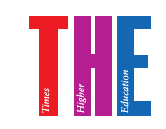Call for institutions to measure social mobility impact via graduates’ careers
Universities should be assessed on how many students from poorer families they send into professional jobs, rather than how many they admit, a former vice-chancellor has argued.
In a report for the thinktank CentreForum, Michael Brown, who led Liverpool John Moores University from 2000 to 2011, says existing measures of universities’ impact on social mobility focus solely on “inputs” – the number of students admitted from poorer backgrounds.
But they should instead concentrate on student “outcomes” achieved by universities, namely how many poorer students gain graduate employment soon after graduation.
“University recruitment alone is no indicator of having achieved social mobility in a sustainable or meaningful way,” writes Professor Brown in the report, titled Higher Education as a Tool of Social Mobility, published on 1 May.
Indeed, recruiting more students from poorer backgrounds could be a “perverse” and retrograde move if they do not get the support to achieve good degrees and professional jobs, given the debts they will incur, he says.
To encourage universities to improve their support for disadvantaged students in gaining professional employment, Professor Brown suggests a new Social Mobility Graduate Index, which could be used in league tables.
Using official student and employment data that already informs universities’ Key Information Sets, the index would reflect the destinations of university leavers six months after they graduate.
Those universities who sent a large number of poorer students into graduate-level jobs would be rewarded for their employability success and their contribution to improving social mobility.
In the proposed index featuring 153 institutions, the School of Pharmacy is top, followed by the University of St Mark and St John in Plymouth, Ravensbourne college in London, University Campus Suffolk and Edge Hill University.
Most of those institutions’ success reflects their orientation towards professions such as nursing and teaching, but other less specialised universities perform strongly, including the University of Huddersfield (sixth), Glyndwr University (joint seventh) and the University of Lincoln (joint ninth).
Only two Russell Group members feature in the top half of the index (Cardiff University at joint 59th and Newcastle University at joint 74th), with the group’s poor performance reflecting the high level of social privilege of its students, the report says. The University of Oxford finishes second to last (above only the University of Buckingham), just behind the University of St Andrews.
To incentivise universities to improve social mobility, Professor Brown suggests that student quotas are retained, with extra places awarded to universities with strong track records in helping poorer students into the professions.
But he notes that the government is to abolish student number controls from September 2015, which in essence means it “is relying entirely on the market to deliver the [social mobility] outcomes that it desires”.
With the government “relinquishing influence” over social mobility, students should have access to the index, which provides “timely and accurate performance information to allow [them] to make informed choices on the best institution to deliver the outcome they seek”, Professor Brown concludes.
———————————————————————————
 Russell group denies claim that they fail to boost poorer graduates’ prospects
Russell group denies claim that they fail to boost poorer graduates’ prospects
The research, published by the thinktank CentreForum, argues government policy is too narrowly focused on encouraging universities to recruit more students from disadvantaged backgrounds, rather than on what happens to those students during and after their studies.
It proposes that a “social mobility graduate index” be used to measure how successful universities are at finding employment for all of their students, with greater weight given to students from areas with very low rates of higher education.
A prototype of the index put University College London’s School of Pharmacy in first place, followed by the University of St Mark & St John – nicknamed Marjon – in Plymouth. Other than the School of Pharmacy, not a single Russell group university appeared in the top 20 and only Aston University represented the pre-1992 universities.
Professor Michael Brown, a former vice-chancellor of Liverpool John Moores University and the author of the report, said: “In terms of graduation performance and employment outcomes, students from areas of high disadvantage have a lower success rate than those from more advantaged backgrounds.
“And despite the political focus on access to Russell group universities, the most selective institutions do not necessarily deliver the best professional graduate outcomes for disadvantaged students either. It is time to raise the game.”
But Wendy Piatt, director general of the Russell group, said: “We reject the findings and methodology of this report. It makes very strange assumptions about social mobility.
“It fails, too, to recognise that those students from more disadvantaged backgrounds are more likely to complete their degree at a Russell group university than they are at other institutions.”
Piatt said the index used only a survey of graduate employment six months after completion of studies and gave a lower weight to students undertaking postgraduate study.
“In fact, graduates from Russell group universities go on to earn more than other graduates, are more likely to be in high-skilled jobs and earn 24% more per hour than their peers from other universities,” Piatt said.
“Employers know the quality of students from our universities is high: that is why nine out of the top 10 universities most often targeted by Britain’s top graduate employers are Russell group universities.”
Brown said the point was not to criticise Russell group members so much as demonstrate that many less-selective universities were doing a better job of helping graduates into professional employment.
The report says that Russell group universities do badly in the social mobility index because so few of their students come from deprived backgrounds. While 70% of Russell group undergraduates are in the two most advantaged quintiles as measured by participation in higher education, only 5% were from the lowest participation areas.

0 Comments